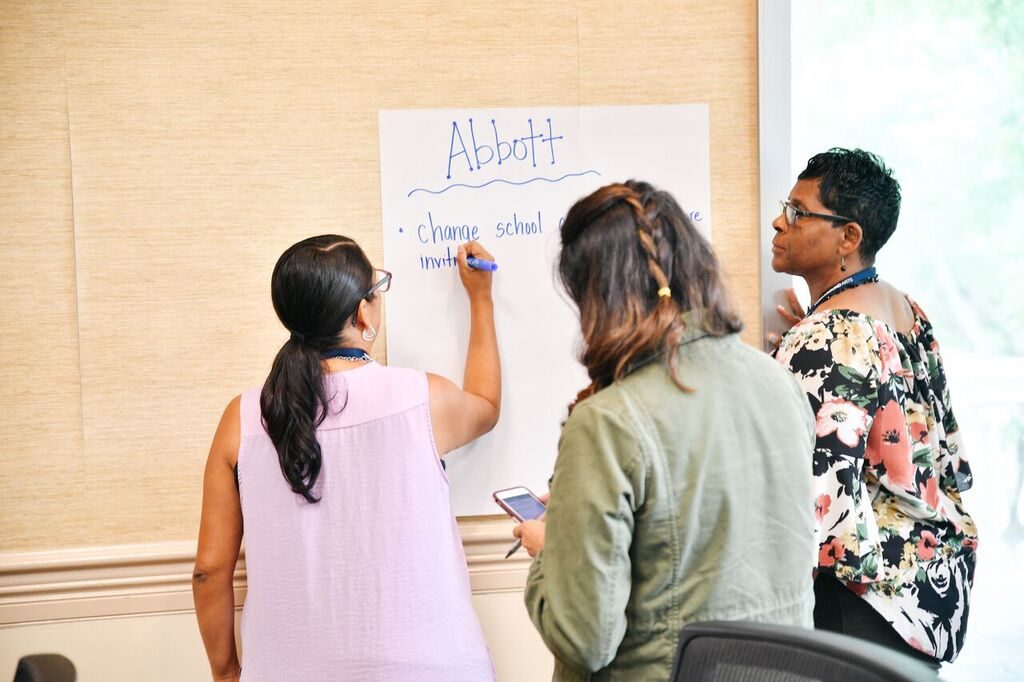
“It is a great experience to share and reflect with fellow supporters of the arts. The professional development is inspiring, and you walk away with a wealth of strategies. It motivates us to be advocates for the arts.”
– Attending Teacher
Turnaround Arts: California’s annual Arts Leadership Team Lead Retreat brings teacher leaders from our 24 partner schools across the state together for two days of immersive arts learning and peer sharing. This annual retreat is aimed at building teacher leadership and fostering a collaborative approach to strengthening our public schools through the arts. Following are highlights from our time together.

Our wonderful hosts at Nickelodeon helped us kick off the retreat with a tour of their studios and a drawing activity with one of their animators. An attending teacher shared, “Drawing with Nickelodeon was an awesome experience, especially since I’m currently doing animation with my students.”


Our partners at P.S. ARTS then led attendees through an arts integration workshop where we learned theater games to use in the classroom, as well as strategies for incorporating creative movement and theater into social studies lessons. One participant shared, “I LOVED the drama activities! I’m already planning on sharing them with my students starting tomorrow! I love that there are different entry levels for engagement and the opportunity for student voice and choice.”

We ended day one with a review of schools’ strategic arts plans to assess progress and identify areas for further support.

We started day two with a soul line dancing workshop with J&J Soulful Steps. We discussed how the arts help us learn persistence as we try new things and how we can create environments where students feel safe to explore.

Mackie Saylor from the Turnaround Arts program in New York shared her work with NYC public schools developing community arts projects that foster more equitable shared spaces for students and teachers.

Program Manager Chelsey Brunelle supported teachers in exploring strategies for developing strong collaborative arts leadership teams at their school sites.

We wrapped up the retreat by exploring student impact evaluation and sharing key takeaways from our two days of learning.
“The arts strategies shared were so engaging, and the safe space provided helped us all feel comfortable to take risks and experience joy.”
-Attending Teacher








 Barbara admits she is a technological dinosaur, so when school moved to a virtual environment in March 2020 she was feeling daunted. Thanks to her school’s support she was able to quickly get the hang of the new technology. However, Barbara was not prepared for the challenge of student engagement. She shared, “My classes were poorly attended. I struggled with identifying the reasons and was determined to do everything in my power to reach my students.”
Barbara admits she is a technological dinosaur, so when school moved to a virtual environment in March 2020 she was feeling daunted. Thanks to her school’s support she was able to quickly get the hang of the new technology. However, Barbara was not prepared for the challenge of student engagement. She shared, “My classes were poorly attended. I struggled with identifying the reasons and was determined to do everything in my power to reach my students.” 















